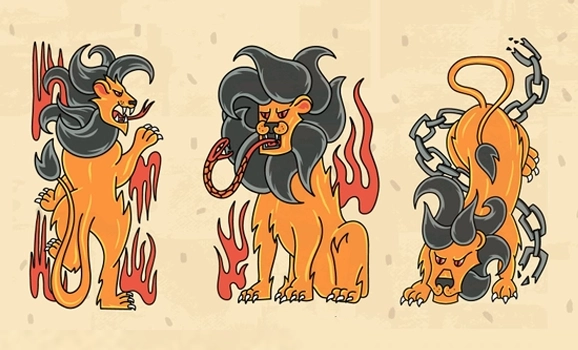Clipart, Vector, and Illustration: What is the Difference
- Nov 3, 2023
- 4 min read
Updated: Apr 4, 2025
In the world of design and graphics, various terms are often used to describe different types of visual elements. Three such terms that are frequently encountered are clipart, vector, and illustration. While they might seem similar at first glance, each has its unique characteristics and use cases. In this article, we will explore the differences between clipart, vector, and illustration.

Clipart vs. Vector vs. Illustration
Differences between clipart, vector and illustration
Element | Description | Characteristics | Use Cases |
Clipart | Pre-made, static images for easy insertion into various projects. | Raster-based, simplicity, limited color palette, susceptible to quality loss when resized. | Decorative purposes in documents, presentations, or digital projects. |
Vector Graphics | Created with mathematical equations, allowing infinite scalability without quality loss. | Resolution-independent, scalable, editable anchor points and paths. | Logos, icons, intricate illustrations, professional design initiatives. |
Illustration | Visual art that represents or interprets an idea, concept, or subject. Can be traditional or digital. | Custom-made, potentially complex and detailed, can be vector-based for scalability. | Storytelling, editorial content, branding, tailored projects requiring specific artistic representation. |
What is Clipart?
Clipart is a term that has been around for quite some time. It refers to pre-made, static images or graphics that can be easily inserted into documents, presentations, or digital projects. Typically characterized by simplicity and a limited color palette, clipart is often utilized for decorative purposes. It offers a convenient way to incorporate visual elements into one’s work without the need for creating them from scratch.
Clipart refers to pre-made, static images or graphics that can be easily inserted into documents, presentations, or digital projects.
Clipart is readily available in various themes and styles, making it accessible to a broad audience.
What are Vector Graphics?
Contrastingly, vector graphics are crafted using mathematical equations to delineate shapes and lines. These equations render vector graphics infinitely scalable without any compromise in quality. Unlike the pixel-based clipart, vector graphics are resolution-independent.
Vector graphics are crafted using mathematical equations to delineate shapes and lines.
Their versatility allows for their application in a wide array of design endeavors, from logos and icons to intricate illustrations. Adobe Illustrator is a commonly employed software for generating vector graphics. The facility to adjust individual anchor points and paths renders vector graphics ideal for precise and detailed projects.
What is an Illustration?
Illustration constitutes a broad category that includes a diverse range of visual art forms. Essentially, an illustration provides a visual representation or interpretation of an idea, concept, or subject. These can be manifested in various styles, extending from traditional hand-drawn and painted artworks to digital illustrations created with graphic tablets or software.
An illustration provides a visual representation or interpretation of an idea, concept, or subject.
In contrast to clipart, illustrations are frequently custom-made and specifically tailored to individual projects. Their potential for detail and complexity makes them apt for storytelling, editorial content, and branding purposes. Illustrations may also be vector-based, amalgamating scalability’s advantages with the creative liberty to forge unique visuals.
FAQ
What is the difference between an illustration and a vector?
An illustration is a broad term for any artwork created to visually represent an idea, story, or concept. It can be hand-drawn or digitally created using various techniques. A vector, on the other hand, is a specific type of digital illustration made using vector graphics software. Vectors are composed of paths defined by mathematical equations, which allows them to be scaled to any size without losing quality.
How can I distinguish between clipart and other types of images?
Clipart refers to pre-made images used for various graphic design purposes. They are usually simple, colorful, and stylized, making them easily recognizable. Clipart images are often available in vector format, allowing for easy resizing and customization. Unlike photos or detailed illustrations, clipart typically lacks complex textures and shading, making them more cartoon-like and straightforward.
What is the difference between clipart and a picture?
Clipart and pictures serve different purposes in design. Clipart consists of simple, stylized images or icons designed for easy use in various projects. They are often vector-based, making them scalable and editable. Pictures, however, are typically photographs or detailed illustrations capturing real-life scenes or complex artwork. Unlike clipart, pictures contain rich textures, colors, and details, making them less flexible for certain design applications.
What is the difference between a vector and an illustration?
A vector is a type of digital illustration created using vector graphics software, which uses mathematical equations to create shapes and lines. This allows vectors to be infinitely scalable without losing quality. An illustration is a broader term that encompasses any artwork created to visually convey a concept or story. While vectors are one form of illustration, not all illustrations are vectors; they can also be raster images, hand-drawn art, or other forms of digital artwork.
In conclusion, clipart, vector graphics, and illustrations each fulfill distinct roles within the realms of design and graphics. Clipart provides ease and simplicity, ideal for straightforward and swift visual enhancements. Vector graphics offer scalability and precision, proving indispensable for professional design initiatives. Illustrations embody a broad spectrum of artistic expression and can be customized to align with specific creative objectives.
Looking for more inspiration? Check out our related blog post:

















